Transforming Your Galley Kitchen: Innovative Remodel Ideas
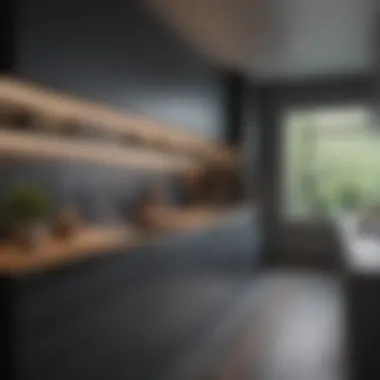
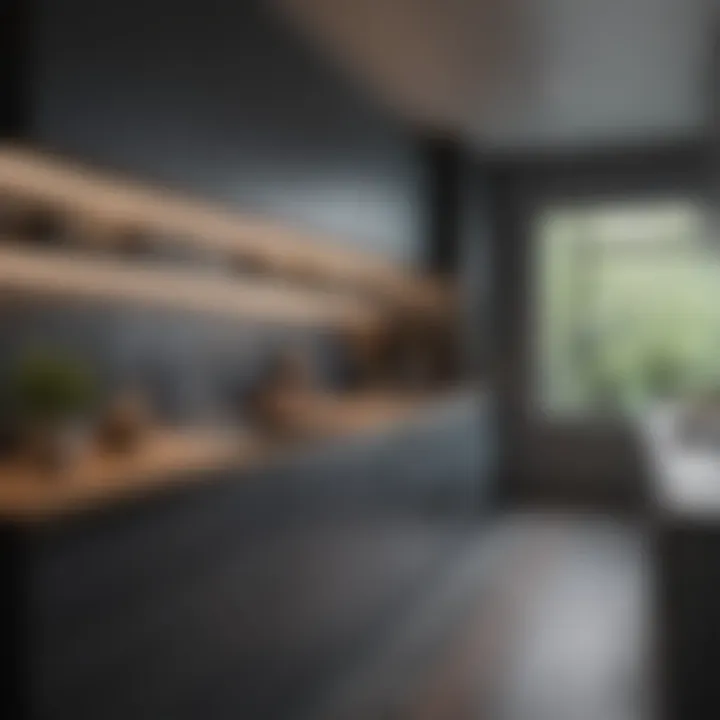
Intro
Remodeling a galley-style kitchen can transform the heart of your home. This type of kitchen, characterized by its long, narrow layout, often presents unique challenges and opportunities. Homeowners frequently desire not only to enhance functionality but also to elevate the room's aesthetic appeal. As we explore ideas for remodeling, we will examine key elements such as design inspiration, layout optimization, storage solutions, and material selection. Each section aims to offer practical insights for creating a space that is both efficient and beautiful.
Design Inspiration
Current Interior Design Trends
In recent years, several design trends have emerged that cater specifically to galley-style kitchens. These trends focus on maximizing space while introducing modern, stylish elements. Open shelving has gained popularity, allowing homeowners to display beautiful dishware and cookware, which can add personality to the kitchen. Additionally, minimalist cabinetry with sleek lines is favored for its simplicity and clean look. Mixed materials, such as combining wood and metal for hardware, also provide an interesting visual texture.
The integration of smart technology is another significant trend in kitchen design. Homeowners are increasingly looking for ways to incorporate smart appliances that enhance convenience. For instance, refrigerators that allow you to view the interior without opening their doors or ovens you can control from your smartphone are gaining traction. Utilizing technology like this can not only improve functionality but also make cooking and meal preparation more efficient.
Color Palettes and Their Effects
Color can dramatically influence the ambiance of a galley kitchen. Light, neutral shades, such as whites, creams, and soft grays, can make a narrow space feel larger and more open. These colors reflect light effectively, creating a bright and airy environment. Conversely, deep colors like navy blue or charcoal can add a sophisticated edge when used thoughtfully.
Choosing the right accent colors is essential too. Pops of color through accessories or an accent wall can bring warmth and personality to the kitchen. Consider using complementary colors to add visual interest without overwhelming the space. The key is to maintain a balanced palette that enhances the overall design while still providing an inviting atmosphere.
"A well-planned color scheme can transform even the smallest kitchen into a welcoming gathering space."
Culmination
In overview, remodeling a galley-style kitchen involves thoughtful design choices that prioritize both functionality and aesthetics. Keeping current trends in mind and selecting an appropriate color palette can lead to a space that reflects your personal style while meeting your cooking needs. This guide has laid the groundwork for your remodel, encouraging further exploration into specifics like layout optimization and storage solutions in the following sections.
Preface to Galley Kitchens
Galley kitchens, characterized by their narrow, corridor-like shape, have become a popular choice in many homes, especially where space is limited. This kitchen layout is typically designed with two parallel countertops, allowing for an efficient workflow. The thoughtful structuring of galley kitchens offers distinct advantages, particularly in terms of maximizing space, enhancing functionality, and creating a streamlined cooking environment.
A notable benefit of galley kitchens is their efficiency. The layout’s proximity from one side to another facilitates easy movement between cooking, cleaning, and food preparation areas. This is particularly useful for homeowners who enjoy multitasking or cooking elaborate meals. In essence, everything is within arm’s reach. Homeowners can navigate comfortably without the need to traverse long distances, thus making the cooking experience more pleasant.
Moreover, galley kitchens offer opportunities for creative design touches. Custom cabinetry, unique finishes, and innovative appliances can be easily integrated into the layout. A galley kitchen remodel can highlight personal style while enhancing usability. There are various design considerations to keep in mind, such as color schemes, lighting, and material choices that will significantly impact the overall aesthetic and functionality of the space.
Homeowners should also think about storage solutions, as maximizing vertical space is essential in these narrow spaces. Utilizing every inch effectively through shelves, cabinets, and pull-out drawers can optimize storage.
In summary, understanding the unique elements of galley kitchens is crucial for a successful remodel. The layout provides practical benefits while also allowing for creative expression. It’s about transforming potential limitations into opportunities. In this article, we will delve deeper into innovative ideas for remodeling galley kitchens, from layout optimization to material selection, equipping homeowners with the knowledge they need to create an effective and appealing kitchen space.
Understanding the Characteristics of Galley Kitchens
In any discussion regarding galley kitchens, it is crucial to understand their unique characteristics. This understanding lays the groundwork for effective remodeling strategies. Galley kitchens are often favored for their efficient use of space, making them popular in smaller homes or apartments.
A galley kitchen typically consists of two parallel countertops with a walkway in between. This layout promotes a linear cooking space, which can enhance functionality. Homeowners often appreciate this design for increasing efficiency in meal preparation.
Key Considerations
Understanding characteristics can inform design choices. Here are specific elements that matter:
- Space Constraints: Galley kitchens often have limited space. Knowing how to manage this is vital.
- Flow of Movement: The layout allows everyone to move freely between cooking, cleaning, and serving.
- Accessibility: A well-designed galley kitchen makes it easy to access all areas without obstruction.
Space Constraints and Layout Options
Space constraints are a defining aspect of galley kitchens. With limited square footage, every inch must be utilized effectively. This constraint presents both challenges and opportunities.
Homeowners can consider using vertical storage solutions. For example, adding cabinets that reach the ceiling maximizes space usage. Additionally, sliding doors on cabinets can save room compared to traditional swinging doors.
Various layout options exist within the galley format. Consider U-shaped or L-shaped designs that might add dimensional liveliness. These modifications can improve both function and aesthetics.
Common Design Features
Identifying common design features in galley kitchens can provide inspiration for remodels. Here are some notable examples:
- Continuous Countertops: Countertops that flow along both sides create a seamless working area.
- Open Shelving: Instead of traditional cabinetry, open shelves provide visual openness and easy access to kitchenware.
- Efficient Appliances: Compact, energy-efficient appliances are crucial in a galley kitchen. They save space while providing necessary functions.
Important Insight: The effectiveness of a galley kitchen depends on how well the space is organized and designed. Careful planning can turn a small kitchen into an efficient cooking haven.
These characteristics not only define the visual aspect of a galley kitchen but also significantly affect its usability. Understanding these key factors is essential for any successful remodel.
Functional Design Principles
Functional design principles play a critical role in the effectiveness and efficiency of galley kitchens. This style, characterized by its narrow shape and dual parallel countertops, benefits significantly from a design approach that prioritizes both utility and style. For homeowners looking to remodel, understanding these principles is essential in creating a space that maximizes productivity and enhances usability without sacrificing aesthetic appeal.
The Work Triangle Concept
The work triangle is a foundational concept in kitchen design that focuses on the three main areas of activity: the stove, the sink, and the refrigerator. In a galley kitchen, optimizing the position of these key elements can significantly enhance workflow. The idea is to create a triangular layout, minimizing the distance between these critical points.
When considering a remodel, aim to maintain a distance between these three areas of about four to nine feet, ensuring that movement feels natural while working in the kitchen. This layout facilitates a smoother cooking experience, allowing for efficiency when preparing meals.
- Benefits of the Work Triangle:
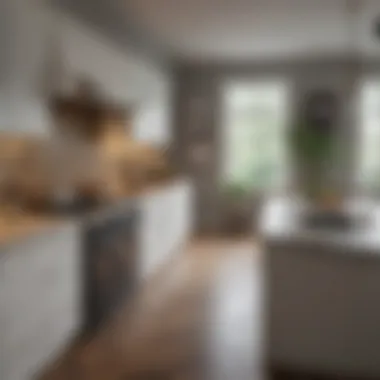
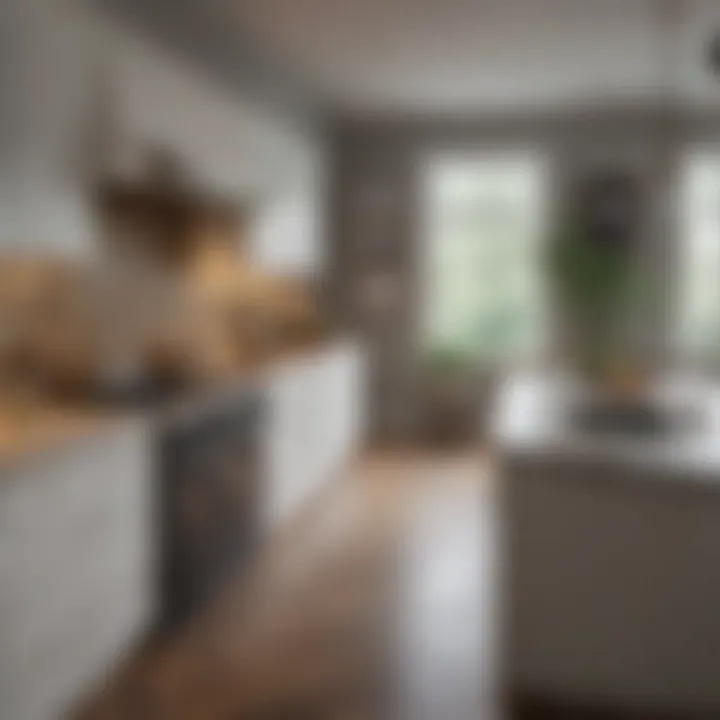
- Reduces unnecessary movement, saving time.
- Enhances safety, as it keeps cooking and cleaning areas distinct.
- Allows for multitasking, making it easier to handle multiple tasks at once.
In a compact galley kitchen, applying this principle can create a harmonious flow and improve overall functionality. Simple adjustments in layout can lead to substantial improvements in usability.
Optimizing Workflow
Optimizing workflow in a galley kitchen involves evaluating how space is used while cooking, prepping, and cleaning. This is crucial in any kitchen redesign and is particularly important in limited spaces. Here are a few strategies for this:
- Zoning: Divide the kitchen into specific zones for different activities, such as prep, cook, and clean. Each zone should be equipped with tools that are easily accessible.
- Clear Pathways: Ensure that pathways are free from obstructions. Enough room should exist between countertops and appliances, usually at least three feet, to allow for easy movement.
- Accessible Storage Solutions: Use drawer systems and cabinets to keep kitchen essentials organized and at hand. Pull-out shelves and lazy Susans can greatly aid in efficiency.
A clear workflow not only streamlines performance but also minimizes stress while cooking. Prioritizing these principles can lead to a remodel that feels more spacious and functional than before.
Color Schemes and Aesthetic Choices
Color schemes and aesthetic choices play a pivotal role in any kitchen remodel, especially in the galley-style layout. The right colors can transform a narrow, potentially cramped space into an inviting area. Selection of colors impacts not just the visual appeal, but also influences the perceived size and comfort of the kitchen. Each color has its unique psychology; for instance, warm colors like red and yellow can stimulate appetite, while blues and greens may create a calming effect. Understanding the effect of color is essential to create an emotional response that enhances the overall experience of the kitchen.
When considering galley kitchens, it's important to focus on how colors interact with light in these long and narrow cutouts. Reflective surfaces can enhance brightness, making the kitchen seem larger. Choosing complementary colors ensures that different elements work in harmony. Additionally, considering the flow between the kitchen, dining, and living areas can foster a cohesive look throughout the home.
Choosing Complementary Colors
Choosing complementary colors involves selecting hues that work well together. This can enhance visual interest and maintain a sense of balance within the kitchen space. For example, pairing a muted gray cabinetry with vibrant green accents can draw attention and create an engaging focal point.
Considerations for choosing colors include:
- Existing Elements: Take into account countertops, flooring, and appliances. Matching or creating contrasts with these elements can unify the space.
- Natural Light: Assess how natural light enters the space throughout the day. Colors will look different under varying lighting conditions.
- Personal Preference: Ultimately, your style should shine through. Use color swatches to get a feel for how a color will play in the actual space.
Using Colors to Create Illusion of Space
In a galley kitchen, the perception of space is often a challenge. However, thoughtful use of color can significantly influence this perception. Light colors typically create a feeling of expansiveness. Soft whites or pastels can reflect light, opening up the area.
On the other hand, darker colors absorb light, leading to a more enclosed feel. If darker shades appeal to you, consider using them as accents rather than primary colors. Try these tips to master the illusion of space:
- Vertical Lines: Use colors and patterns that draw the eye upward, such as vertical stripes. This can give the illusion of height.
- Monochromatic Palettes: Stick to varying shades of one color. This can help maintain simplicity and ease the visual load.
- Accent Walls: A bold accent wall can add depth while still allowing lighter colors to dominate the other walls.
The correct color choice not only contributes to beauty but also amplifies the functionality of galley kitchens.
Remember, the goal is to make the kitchen a space that feels both practical and welcoming. By thoughtfully selecting color schemes, one can create a remarkable environment that enhances everyday experiences.
Material Selection for Durability and Style
Material selection is a pivotal aspect of any kitchen remodel, especially in a galley style kitchen where space and functionality are crucial. The right materials not only enhance the durability of the kitchen but also contribute to its overall aesthetic appeal. Choosing durable materials will ensure that your kitchen withstands daily use while maintaining its visual charm for years to come. Homeowners should weigh factors like maintenance, longevity, and style when selecting materials. This section delves into various materials available for countertops and cabinetry, highlighting specific benefits and considerations.
Countertop Materials to Consider
Quartz
Quartz countertops are engineered stone surfaces that combine natural quartz crystals with resin. One of the key characteristics of quartz is its non-porous nature, which makes it resistant to stains and bacteria. This is particularly beneficial in a kitchen setting where hygiene is paramount. The unique feature of quartz is its ability to mimic the appearance of natural stone while offering a wide variety of colors and patterns. However, a potential downside is that it can be more expensive than some other options, which may impact budgeting considerations.
Granite
Granite is a classic choice that is both durable and aesthetically pleasing. This natural stone is favored for its heat resistance and unique patterns, ensuring no two slabs are identical. The key characteristic of granite lies in its strength; it can handle heavy pots and pans without scratching or chipping. Additionally, its longevity means it can last a lifetime with proper care. However, maintaining granite requires regular sealing to prevent staining, which can be seen as a disadvantage by some homeowners.
Butcher Block
Butcher block countertops, typically made from hardwoods like maple or oak, are warm and inviting. A key characteristic of butcher block is its cutting surface, which is gentle on knives. One major advantage is its renewability; scratches and dents can be sanded out easily, maintaining its beauty over time. However, butcher block is susceptible to moisture and can harbor bacteria if not properly cared for. Regular oiling is necessary to maintain its appearance and functionality.
Cabinetry Choices for Galley Kitchens
Materials
When it comes to cabinetry, the choice of materials plays a crucial role in both durability and style. Common materials include plywood, MDF, and solid wood. Plywood is often favored for its strength and resistance to warping, making it a practical choice for kitchen environments. Solid wood cabinetry offers unmatched aesthetics but can be pricier and may require more maintenance. Understanding the trade-offs of these materials will help homeowners make informed decisions about their kitchen remodel.
Styles
The style of cabinetry can significantly influence the overall look of a galley kitchen. For example, shaker style cabinetry offers a classic, timeless appearance with clean lines, which can seamlessly blend with modern or traditional elements. In contrast, sleek, handle-less cabinetry might appeal to those looking for a contemporary feel. Selecting a style that complements the kitchen's overall design theme is essential for achieving a cohesive look.
Finishes
Finishes are the final layer that adds character to cabinetry. Options range from matte to glossy, each affecting how light interacts with the surface. For instance, a matte finish reduces glare and can hide scratches and fingerprints, making it an advantage for workspaces. On the other hand, glossy finishes offer a polished look and can make a space feel larger, but they may require more upkeep. Assessing the practical implications of different finishes ensures both beauty and functionality in cabinetry choices.
Lighting Solutions for Functional Spaces
Lighting plays a pivotal role in the functionality and aesthetic of any kitchen, particularly in galley-style layouts characterized by their narrow design. Well-planned lighting can enhance the usability of the kitchen while simultaneously elevating its overall ambiance. It can affect the mood and also improve visibility for cooking and activity zones.
The right lighting solutions can address key challenges presented by galley kitchens, such as dark corners or limited natural light. It is essential to consider how each layer of lighting contributes to the overall functionality and feel of the space. Therefore, incorporating varied lighting strategies is not merely a decorative choice; it becomes a critical aspect of the remodeling process.
Layered Lighting Approaches


Layered lighting combines multiple sources of light to create a balanced and versatile environment. In a galley kitchen, utilizing a blend of ambient, task, and accent lighting can ensure the space is well illuminated.
- Ambient Lighting: This serves as the primary source of light and can include ceiling-mounted fixtures or recessed lighting. Fixtures should be evenly spaced to minimize shadows and provide general illumination.
- Task Lighting: Focused lighting that aids in specific activities, such as cooking or preparing meals. This can range from under-cabinet lights to pendant lights above work areas. Using adjustable fixtures allows more control over light intensity.
- Accent Lighting: This highlights architectural features, artwork, or decorative elements. It may also involve recessed lighting on shelves or backlit designs. Accent lighting not only adds visual interest but also creates depth in the space.
By combining these layers, homeowners can develop a holistic lighting solution that caters to both functionality and style, ultimately transforming how the kitchen operates.
Task Lighting and Its Importance
Task lighting is a crucial component of kitchen design that prioritizes functionality. In a galley kitchen, where space is often limited, ensuring adequate lighting for specific tasks can significantly enhance efficiency.
The importance of task lighting includes:
- Improving Safety: Well-lit work areas reduce the risk of accidents, particularly around sharp knives and hot stoves.
- Enhancing Productivity: With proper visibility, food preparation becomes more manageable, which can encourage more creative cooking.
- Providing Flexibility: Adjustable task lighting allows for personalized illumination, allowing users to adapt the lighting based on the time of day or nature of their kitchen activities.
Consider implementing under-cabinet lighting as an effective solution. This not only brightens typically shadowed areas but also creates a sense of depth in the kitchen layout. Additionally, choosing warmer tones can foster a more inviting atmosphere, making the galley kitchen a favored gathering and workspace.
In summary, investing in appropriate lighting solutions, especially appropriate task lighting, is integral to the success of a galley kitchen remodel. It ensures the kitchen is not only visually appealing but also a highly functional culinary space.
Storage Solutions to Maximize Efficiency
Maximizing storage efficiency in a galley kitchen is very important, especially given its limited space. Utilizing every available inch can significantly improve functionality without sacrificing style. A well-organized kitchen ensures that all tools, cookware, and ingredients are within reach. This enhances the workflow and makes for a more enjoyable cooking experience.
When thinking about storage solutions, consider how you can keep the area tidy and visually appealing. Efficient storage solutions can include various designs and arrangements that cater to your personal needs while adding a touch of elegance to the overall design.
Built-In Cabinets and Shelving
Built-in cabinets and shelving units are indispensable in a galley kitchen. They offer a seamless integration with the existing space. When choosing cabinets, focus on quality materials and finishes that complement the kitchen’s overall aesthetic.
- Custom Designs: Custom-built cabinets allow for optimal use of every corner, ensuring no space is wasted. This can include designs that are tailored to your specific cooking habits.
- Open Shelving: Incorporating open shelves increases accessibility and can be used to display attractive dishes or cookbooks. This adds a decorative element alongside its functional use.
- Drawer Organization: Use drawers instead of shelves where possible. Deep drawers can hold pots and pans efficiently, while shallow ones can be equipped with dividers for utensils, improving organization.
"Efficient storage transforms limited space into a practical kitchen with everything at your fingertips."
Utilizing Vertical Space
Utilizing vertical space is crucial in a galley kitchen where horizontal space is often limited. Installing tall cabinetry extends all the way to the ceiling, providing extra storage while drawing the eyes upward to create a sense of height in the kitchen. Here are key considerations for optimizing vertical space:
- Stackable Storage: Use stackable containers for dry goods, maximizing cabinet and pantry space. This not only organizes items neatly but also makes every inch count.
- Wall-Mounted Storage: Consider mounting pots or tools on walls. Magnetic strips can hold knives and metal utensils, freeing up counter space.
- Ladder Shelves: These can serve as both a storage solution and a striking design feature. They add visual interest and offer a place for more decorative or frequently used items.
Incorporating Innovative Technology
In the shifting landscape of kitchen design, incorporating innovative technology is essential, especially for galley kitchens where space is limited. The integration of technology not only enhances practicality but also significantly elevates the overall aesthetic and functionality of the kitchen environment. Homeowners are increasingly looking to smart solutions that optimize daily tasks while providing a seamless cooking experience. Key components of this technological integration include smart appliances and home automation systems.
Smart Kitchen Appliances
Smart kitchen appliances are revolutionizing how homeowners interact with their kitchen spaces. These devices often come equipped with connectivity features that allow users to control them via a smartphone. For instance, smart refrigerators, such as those from Samsung or LG, can notify users about grocery items and expiration dates.
Benefits of incorporating these appliances are numerous:
- Efficient Monitoring: Smart appliances provide real-time updates, which help in maintaining an organized kitchen.
- Energy Efficiency: Many modern devices are designed to reduce energy consumption, aiding in eco-friendly kitchens.
- Enhanced Functionality: Features like remote access and smart technology make cooking and food storage more convenient.
When considering smart appliances, it is crucial to check compatibility with existing kitchen layouts and ensure they blend seamlessly with style and aesthetics.
Home Automation for Kitchen Functionality
Home automation is a game-changer in enhancing kitchen functionality, especially in galley-style designs. Systems such as Google Home or Amazon Alexa can integrate with appliances to create a smart kitchen ecosystem.
Considerations for automation include:
- Voice Control: Home automation allows easy access to appliances without needing to touch controls, ideal for when hands are full.
- Customized Settings: Homeowners can set up tailored routines such as scheduled brew times for coffee machines or controlled lighting based on meal prep times.
- Safety Features: Automated solutions can enhance safety by offering remote monitoring through cameras or alerts if any essential appliances are left on.
Incorporating these technologies not only drives efficiency but also enhances the kitchen's usability in daily living. Technology integration offers unique advantages and should be balanced with traditional design elements to maintain an inviting atmosphere in a galley kitchen.
Trends in Galley Kitchen Designs
In the evolving landscape of home design, galley kitchens have garnered notable attention. Their compact layout allows for efficient use of space while providing a cozy environment for culinary endeavors. Understanding the trends in galley kitchen designs is crucial for homeowners aiming to remodel. Integrating contemporary styles, sustainable practices, and smart technologies not only enhance functionality but also reflect personal taste. These trends can adapt to various lifestyles, from minimalist to eclectic, ensuring a kitchen that caters to both aesthetics and utility.
Vintage vs. Modern Styles
The dichotomy between vintage and modern styles in galley kitchens reflects broader design preferences. Vintage styles often evoke nostalgia, featuring elements like classic cabinetry, retro appliances, and intricate tile patterns. This design choice appeals to those who appreciate timeless beauty and craftsmanship. On the other hand, modern styles emphasize simplicity, using sleek lines and minimalistic designs. Open shelving, integrated appliances, and neutral color palettes characterize this trend.
For homeowners, combining these styles can lead to unique results. For example, using retro-style appliances in a contemporary layout creates a functional yet charming kitchen. Also, decor accents such as vintage dishware can add personality without overwhelming the modern aesthetic. The result is a balanced space rich in character and practicality.
Sustainable and Eco-Friendly Options
Sustainability in kitchen design is more than a trend; it has become a necessity. Homeowners increasingly seek eco-friendly options, influencing the materials and practices used in galley kitchen remodels. This approach promotes environmental responsibility and can yield long-term savings, especially in energy consumption.
Eco-friendly materials like bamboo cabinetry, recycled glass countertops, and low-VOC paints contribute to a healthier atmosphere. Additionally, incorporating energy-efficient appliances, such as those certified by Energy Star, can significantly reduce electricity use, aligning with green living principles.

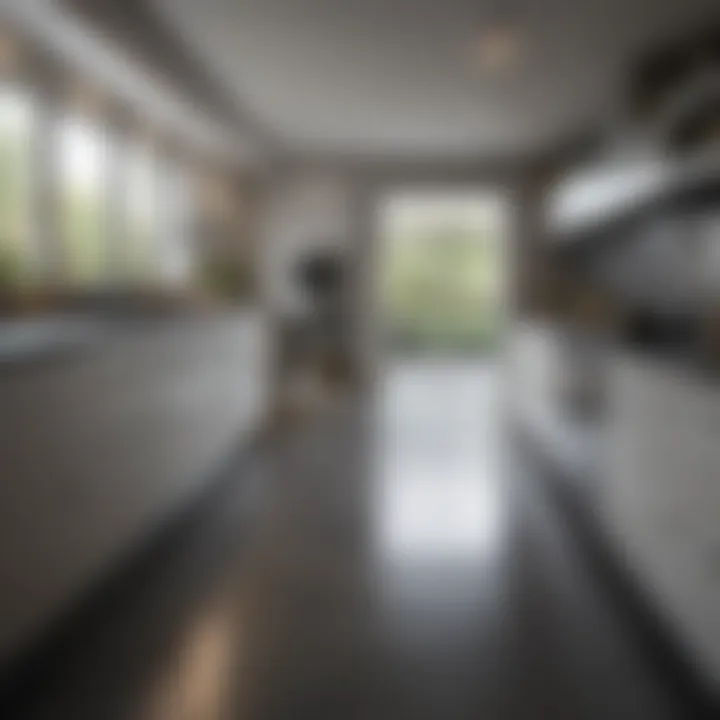
Every decision, from choosing materials to installing fixtures, should reflect this commitment to sustainability. The integration of natural light through strategically placed windows can also enhance the kitchen’s atmosphere while minimizing reliance on artificial lighting.
"Adopting sustainable kitchen practices not only benefits the environment but also elevates your home's value."
Case Studies of Successful Remodels
Case studies are a vital element when considering a galley kitchen remodel. They provide real-world examples of how specific designs, materials, and technologies can effectively transform a kitchen space. By examining these successful remodels, homeowners can gain insights into practical solutions that may not be evident in abstract concepts. Case studies allow for a deeper understanding of challenges faced and how they were creatively resolved, making the process more relatable and less intimidating.
Additionally, case studies emphasize the importance of thoughtful planning and execution. They showcase varied approaches to layout changes that maximize small spaces while providing inspiration for aesthetic choices. Learning from the experiences of others can enhance a homeowner's sense of confidence in making decisions about their own kitchen remodel.
Savvy Layout Changes
In a galley kitchen, layout changes can significantly impact both functionality and flow. Effective layouts can turn a cramped space into an efficient cooking haven. For instance, removing non-load bearing walls can open up the kitchen, giving a sense of expansion. One successful remodel involved shifting the position of cabinetry to create an open passageway, allowing for easier access to appliances and storage.
Additionally, exploring modular designs, such as pull-out shelves and rolling carts, can dramatically improve usability. These elements not only provide flexible storage options but also help in maintaining the kitchen's organization. Homeowners have reported clearer workflows and reduced clutter after implementing such savvy layout changes.
Before and After Comparisons
Analyzing before and after comparisons serves as a compelling testament to the power of strategic remodeling. These comparisons highlight not only the visual transformation but also the functionality enhancement of the kitchen. For example, one kitchen initially featured dark cabinets and limited light sources. After a remodel, it transitioned to brighter colors and more effective lighting.
Such transformations often illustrate the impact of even small adjustments. According to homeowners, updating cabinet hardware, changing countertops, and adding backsplash features can bring a dull kitchen back to life. More importantly, these renovations result in a space that better serves the family's needs, facilitating kitchen activities more efficiently. The visual journey from before to after often inspires others to envision changes in their own kitchens, moving from ideas to actionable plans.
Budget Considerations for Galley Kitchen Remodels
When planning a remodel for a galley kitchen, budget considerations are crucial. This segment addresses aspects related to financial planning that are often overlooked yet play an integral role in the success of your project. A clear budget ensures that investments align with your preferences while avoiding overspending. Various components, such as materials, labor, and design choices, will impact your overall costs. Understanding these factors is vital for any homeowner.
"Setting a realistic budget helps avoid unnecessary financial strain and allows for informed choices during the remodel process."
Cost Estimation Techniques
The first step in creating a budget is estimating costs accurately. You may want to start by gathering data on the average costs associated with kitchen remodeling. Reviewing local prices for materials and labor can provide a baseline. Consider consulting sources like home improvement websites or local contractors for relevant information. Here are some techniques to consider:
- Researching Average Costs: Websites such as HomeAdvisor offer insights into average remodeling costs broken down by region.
- Itemized Estimates: Create an itemized list that outlines all potential expenses. Include categories like cabinetry, countertops, appliances, flooring, and labor.
- Consult with Professionals: Contractors can provide detailed estimates based on the specific work you plan. Their experience helps uncover hidden costs and realities of the market.
Finding Affordable Options
Searching for affordable options is another vital aspect of budget planning in a galley kitchen remodel. Not every choice must break the bank. To maximize value without sacrificing quality, consider the following:
- Second-Hand Items: Check local resale shops or online marketplaces like Facebook Marketplace for gently used appliances or cabinets.
- Refinishing Over Replacing: Instead of replacing cabinetry, you might choose to refinish or repaint existing units. It can yield a fresh look at a fraction of the cost.
- Wholesale Materials: Buying materials in bulk from wholesalers can significantly reduce costs. This option is particularly beneficial for items like tiles or flooring.
- DIY Choices: If you have the skills and time, tackle simple projects yourself to save on labor costs.
By implementing these budgeting strategies for your galley kitchen remodel, you stand better positioned to achieve an attractive and functional space while managing expenditures effectively.
Preparation for Your Remodel Project
Remodeling a galley kitchen requires thoughtful preparation. This phase is crucial to ensure the project's smooth execution and efficiency. Understanding key elements of preparation can significantly affect the outcome of a kitchen remodel.
Choosing the Right Contractors
Selecting appropriate contractors is one of the most pivotal steps in the remodeling process. It is essential to assess various options and their qualifications. Look for contractors with experience specifically in kitchen remodels, particularly in galley kitchens.
Checking reviews and portfolios is vital. Engaging with past clients can provide a clearer perspective of the contractor's capabilities. Hold interviews with potential candidates to assess their communication skills and approach to design. Make sure they understand your vision for the space, ensuring compatibility in design philosophy.
A written contract detailing the scope of work, timeline, and budget is critical to avoid misunderstandings. This contract acts as a roadmap for the project and protects your interests.
In addition, consider contractors who are familiar with local building codes and regulations. This awareness can save you from unexpected delays or costs.
Planning a Timeline
Establishing a well-defined timeline is essential for the success of your remodeling project. Begin by setting a realistic starting date, keeping in mind any delays that may arise. This includes permitting processes, which can vary significantly depending on your location.
Break down the project into specific phases. Major phases often include design, demolition, construction, and finishing. Assign a timeframe for each stage, allocating extra time for unexpected challenges.
Regular check-ins with your contractor throughout the process can help ensure that the project stays on track. Address potential delays in planning. This allows you to manage expectations effectively.
When planning, also consider how the remodel will impact your daily life. Creating a temporary kitchen space can ease the transition during construction. This forethought keeps household disruptions to a minimum.
"Proper preparation ensures that your remodel is not just a hope but a well-executed plan."
All these preparation steps lead to a clearer understanding of both your goals and the project's path. Take this phase seriously, as it sets the tone for the entire remodel experience.
Culmination and Next Steps
In the context of galley kitchen remodels, the conclusion serves as a pivotal point of reflection. It crystallizes the core insights that emerge from various aspects of design, functionality, and technology integration presented throughout the article. A well-thought-out conclusion highlights the significance of creating a kitchen that not only meets practical cooking needs but also serves as a vibrant hub for social interaction and family gatherings. After evaluating the width of design strategies, material selections, and innovative technology, it becomes clear that every detail matters.
To embark on this remodeling journey, homeowners should prioritize a few key steps. Firstly, conducting thorough research is crucial. Familiarizing oneself with different materials and their benefits can lead to informed decisions that enhance both durability and aesthetic appeal. Understanding how color schemes can influence the perceived size and ambiance of the space will aid in creating a kitchen that feels inviting.
Secondly, engaging with design professionals and contractors can provide tailored insights. Their expertise can help in navigating specific layout designs that maximize efficiency and utility. Moreover, having a clear budget and timeline in mind significantly aids in streamlining the remodeling process, thus preventing common pitfalls that can derail projects.
Finally, remember that the remodeling experience does not end with the completion of the renovation. It is essential to reassess how the space functions and to make adjustments as necessary over time, ensuring it meets evolving needs. Maintaining an adaptable mindset can greatly enhance the longevity of your remodel.
"The kitchen is not just a space for cooking; it's a reflection of lifestyle and aspirations".
In summary, remodeling a galley kitchen is an endeavor that requires careful planning and consideration. A well-designed remodel not only elevates the aesthetic of the home but also contributes to the functionality and enjoyment of daily life. Take the insights shared here, delve deeper into the specifics, and embrace the process, ultimately transforming your kitchen into an environment that serves both practical and emotional needs.















